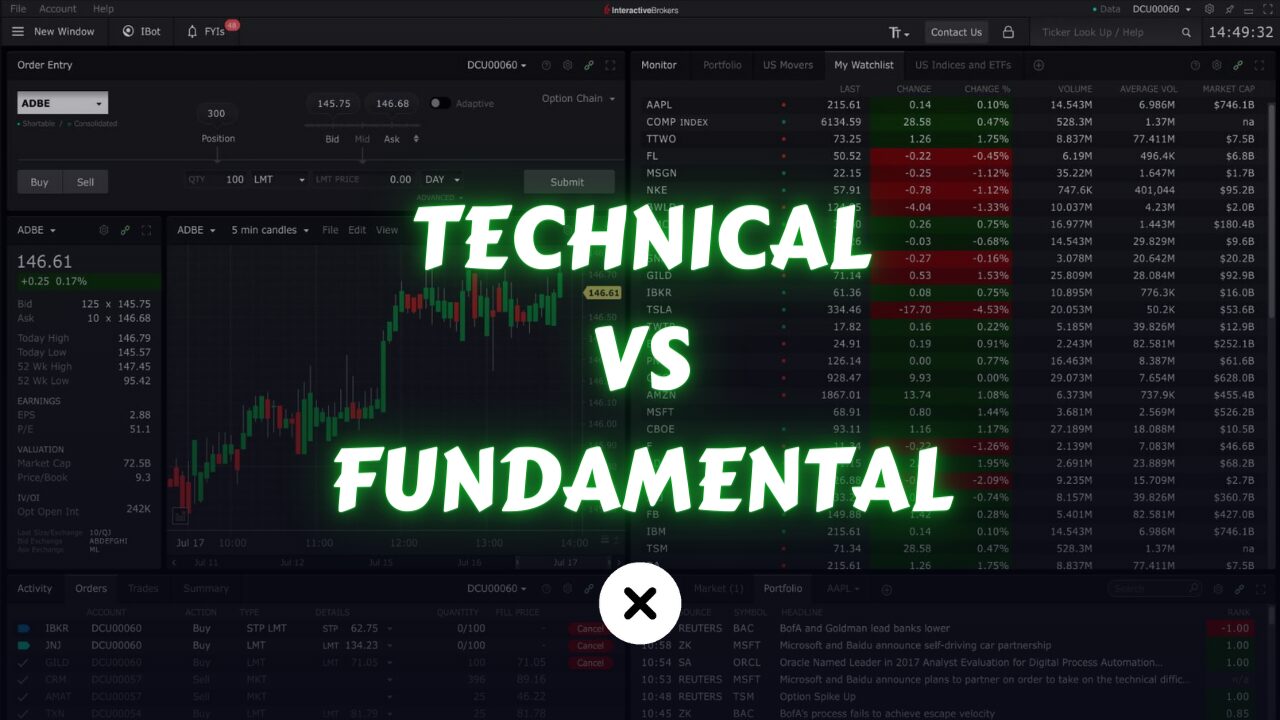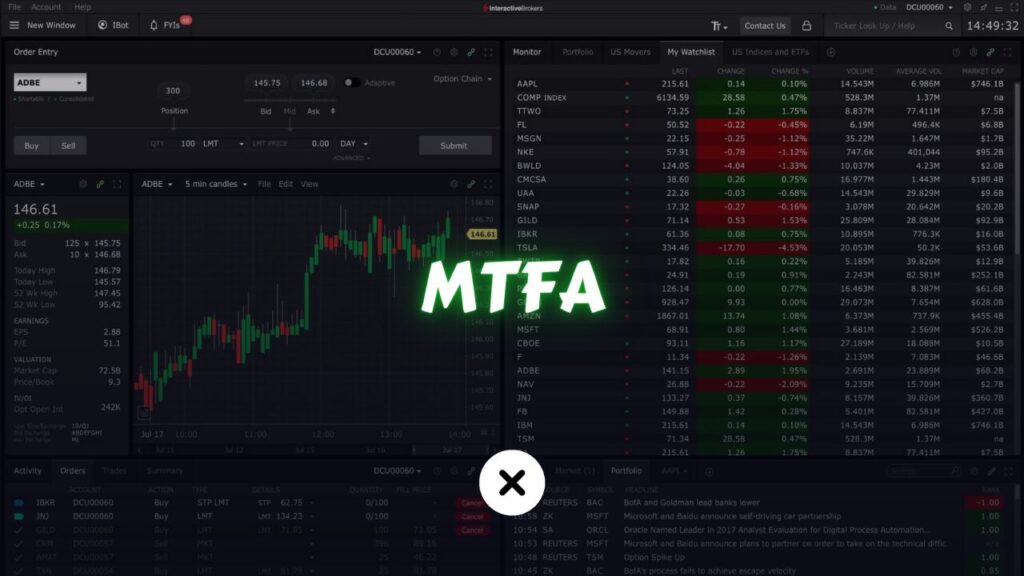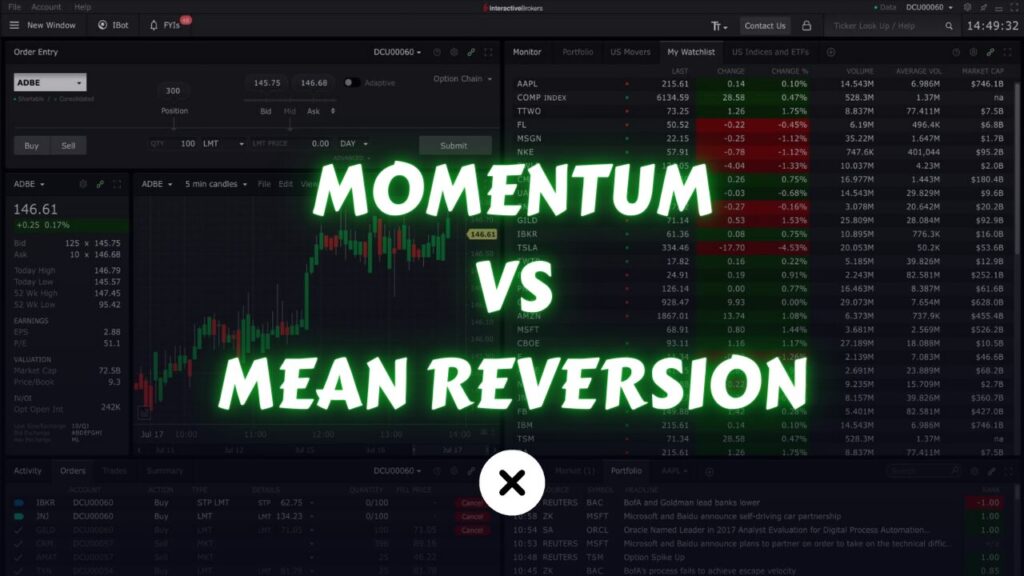
In the world of trading, two primary schools of thought guide traders and investors: technical analysis and fundamental analysis. Each method offers distinct approaches to evaluating securities and making trading decisions, and understanding the differences between them is crucial for anyone looking to navigate the financial markets effectively.
In this article, we are going to talk about technical analysis vs fundamental analysis, and when to use which method.
What is Technical Analysis?
Technical analysis is a method of evaluating securities by analyzing statistics generated by market activity, such as past prices and volume. Unlike fundamental analysis, technical analysis does not attempt to measure a security’s intrinsic value but instead uses charts and other tools to identify patterns that can suggest future activity.
Key Principles of Technical Analysis
Price Discounts Everything: Technical analysts believe that all available information is already reflected in the price of a security. Therefore, they focus on price movements rather than external factors like economic indicators or company financials.
Price Moves in Trends: Price movement is believed to follow trends, which can be long-term, short-term, or intermediate. Technical analysts aim to identify these trends early and trade in the direction of the trend.
History Tends to Repeat Itself: Patterns observed in the past can predict future price movements. This belief is rooted in market psychology; human behavior tends to repeat, causing historical patterns to reoccur.
Tools and Techniques Used in Technical Analysis
Charts: Line charts, bar charts, and candlestick charts are the most common types. These charts provide a visual representation of price movements over different periods.
Indicators and Oscillators: Tools like Moving Averages, Relative Strength Index (RSI), Moving Average Convergence Divergence (MACD), and Bollinger Bands help traders understand the strength, momentum, and volatility of a security.
Patterns: Recognizable shapes such as Head and Shoulders, Flags, and Double Tops/Bottoms help in predicting future price movements based on past behavior.
Advantages of Technical Analysis
Quick Decision Making: Since it relies on market data, technical analysis can offer immediate insights and help traders make quick decisions.
Applicability to Any Market: It can be used for various securities, including stocks, commodities, and forex.
Focus on Timing: It emphasizes the optimal timing for entering and exiting trades, crucial for short-term trading strategies.
Disadvantages of Technical Analysis
Subjectivity: Interpreting charts and patterns can be subjective, leading to different conclusions by different analysts.
Lagging Indicators: Many technical indicators are based on past data and may lag behind current market conditions.
What is Fundamental Analysis?
Fundamental analysis involves evaluating a security by examining related economic, financial, and other qualitative and quantitative factors. This method aims to determine the intrinsic value of a security, which can then be compared to its current price to make investment decisions.
Key Principles of Fundamental Analysis
Intrinsic Value: Fundamental analysts believe that every security has an intrinsic value, which is its true worth based on objective factors. They seek to identify securities that are mispriced by the market.
Long-Term Focus: This approach is typically used for long-term investment decisions, focusing on a security’s potential to perform well over time rather than short-term price movements.
Comprehensive Analysis: Fundamental analysis involves a thorough examination of a company’s financial statements, management, competitive advantages, industry conditions, and broader economic factors.
Tools and Techniques Used in Fundamental Analysis
Financial Statements: Analysis of balance sheets, income statements, and cash flow statements to assess a company’s financial health.
Ratios: Key ratios like Price-to-Earnings (P/E), Price-to-Book (P/B), Debt-to-Equity (D/E), and Return on Equity (ROE) provide insights into valuation, profitability, and financial stability.
Economic Indicators: Macroeconomic factors such as GDP growth rates, interest rates, and inflation are considered to gauge the overall economic environment.
Qualitative Factors: These include the quality of a company’s management, brand strength, and competitive positioning within the industry.
Advantages of Fundamental Analysis
Informed Decisions: Provides a deeper understanding of a company’s potential and market position, aiding in making informed investment choices.
Long-Term Growth: Focuses on long-term value creation, which can lead to significant returns over time.
Less Market Noise: Reduces the impact of short-term market fluctuations, focusing instead on underlying value.
Disadvantages of Fundamental Analysis
Time-Consuming: Requires extensive research and analysis, making it less suitable for quick trading decisions.
Subject to Change: Intrinsic value estimates can be impacted by changes in economic conditions, management decisions, and industry dynamics.
Technical Analysis vs Fundamental Analysis
Objective:
Technical Analysis: Primarily aims to forecast short-term price movements and market trends.
Fundamental Analysis: Seeks to determine the long-term value of a security based on underlying factors.
Time Horizon:
Technical Analysis: Often used for short-term trading strategies, including day trading and swing trading.
Fundamental Analysis: Typically employed for long-term investment strategies, focusing on sustainable growth.
Data Sources:
Technical Analysis: Relies on historical price data and trading volume.
Fundamental Analysis: Utilizes financial statements, economic reports, and industry analysis.
Skill Sets:
Technical Analysis: Requires skills in chart reading, pattern recognition, and understanding technical indicators.
Fundamental Analysis: Involves financial literacy, economic understanding, and the ability to interpret qualitative information.
In Conclusion, Technical analysis involves examining prices and volume, while fundamental analysis encompasses the evaluation of all other aspects related to the company or asset. This includes factors such as earnings, dividends, cash flows, taxes, geopolitical stability, industry trends, interest rates, and more.
Which Valuation Method to Use When Trading?
In the past, it was possible to profit by solely relying on either technical analysis or fundamental analysis. However, in today’s highly competitive market, it is essential to utilize all the tools at your disposal to maximize your chances of success.
Example:
Suppose you have the intention of purchasing a house with the objective of holding onto it for 20 years. In such a scenario, what factors would you consider while evaluating the house?
You would likely examine the quality of materials used in its construction, its insulation for winter conditions, the efficiency of the heating system, the condition of the pipes, and any recent infrastructure developments such as highways or malls in proximity. All of these aspects are important because you are aware that they could potentially impact the property’s value over the course of 20 years.
If your objective is to purchase a house and sell it within a week, your evaluation criteria would differ from a long-term investment approach.
In this case, factors such as infrastructure development or the quality of materials may not be your primary concern. Instead, you would focus on the performance of other houses in the neighborhood: their selling prices and the number of houses being sold. Since your intention is to quickly buy and sell, the most crucial information for you would be the current prices and market demand. Understanding the supply and demand dynamics allows you to gauge the immediate marketability of the house.
On the other hand, if your objective is to hold the house for 20 years, the quantity and price of other houses become less significant. Your main concern would be identifying the factors that will impact the property’s value over the long term.
The same principle applies to stocks or any other trading instruments.
Just like the example of buying and selling a house, your evaluation approach will vary based on your investment timeframe.
If your objective is short-term trading, you would focus on factors such as current stock prices, trading volumes, and market trends. These indicators help you assess the immediate supply and demand dynamics and make informed trading decisions.
However, if your goal is a long-term investment, you would prioritize different factors. Instead of short-term fluctuations, you would consider fundamental aspects such as the company’s financial health, growth potential, competitive advantage, industry trends, and overall market conditions. By analyzing these factors, you can gain insights into the stock’s potential for long-term value appreciation and make informed decisions aligned with your investment goals.
This is why you will often find that short-term traders tend to rely more on technical analysis, while longer-term traders favor fundamental analysis. A prime example is Warren Buffett, who predominantly utilizes fundamental analysis in his investment approach.
Buffett holds investments for extended periods, allowing ample time for market prices to align with their underlying value. By focusing on the fundamental aspects of a company, such as its financials and long-term prospects, he aims to identify undervalued assets and make informed decisions based on their intrinsic worth.
However, in our approach, we will incorporate both fundamental and technical analysis. Rather than using fundamental reports and statements directly to predict stock prices, we will examine how analysts and portfolio managers utilize fundamental analysis to make their predictions. By understanding their methodologies, we can gauge the potential impact of any changes in fundamentals, such as news, earnings reports, or dividend cuts.
This knowledge allows us to estimate the effect on analysts’ and portfolio managers’ valuations, and consequently, how it might influence the stock price. In this way, we can better anticipate and evaluate the potential changes in stock prices resulting from shifts in fundamental factors.
As short-term traders, specifically day traders or swing traders, our primary focus may not be conducting fundamental analysis. However, we strive to have a solid understanding of it. This enables us to comprehend how changes in fundamental analysis can impact stock prices, which forms the basis of event-based trading. When a significant event occurs or a fundamental ratio undergoes a change, we recognize that it will influence the stock price. By capitalizing on these opportunities, we aim to enter and exit positions to benefit from the resulting price movements.
Conclusion
In summary, our approach involves utilizing both technical and fundamental analysis. Technical analysis involves analyzing charts and patterns, while fundamental analysis involves examining financial statements and underlying company data. We rely on technical analysis for shorter-term trading strategies, while fundamental analysis guides our longer-term investment decisions.
It is common for traders to focus more on technical, while investors tend to prioritize fundamentals when assessing potential investments.
There are individuals who solely rely on technical analysis and dismiss the importance of fundamental analysis. Conversely, there are those who exclusively use fundamental analysis and disregard the value of technical analysis.
In my perspective, both approaches have merit and are valid in their own right. It is essential to develop proficiency in both disciplines. By understanding and utilizing both technical and fundamental analysis, one can gain a comprehensive view of the market and make more informed trading or investment decisions.



